
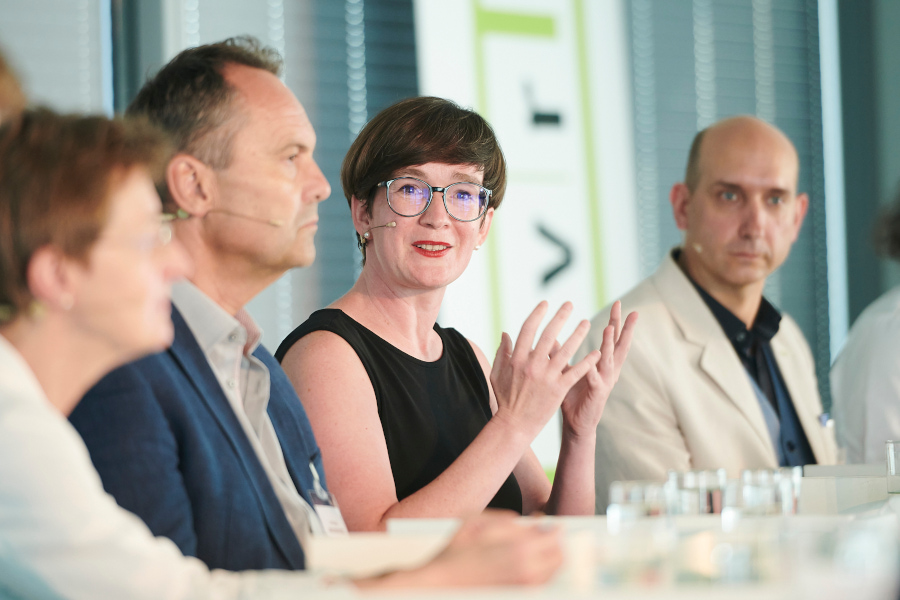
Henriette Spyra, section head of "Technology and Innovation" at the Federal Ministry for Climate Protection, Environment, Energy, Mobility, Innovation and Technology, addressed the title of the panel discussion - technology is a tool that we must use for climate change mitigation. As a matter of fact the sustainability shift does not work without technology. Henriette Spyra named Green Tech as a crucial tool for Austria's future, but at the same time Tech for Green plays also a big part in mitigation strategies. In particular, innovation is needed for decarbonization and sustainability, but at the same time the individual contribution of each person is also needed.
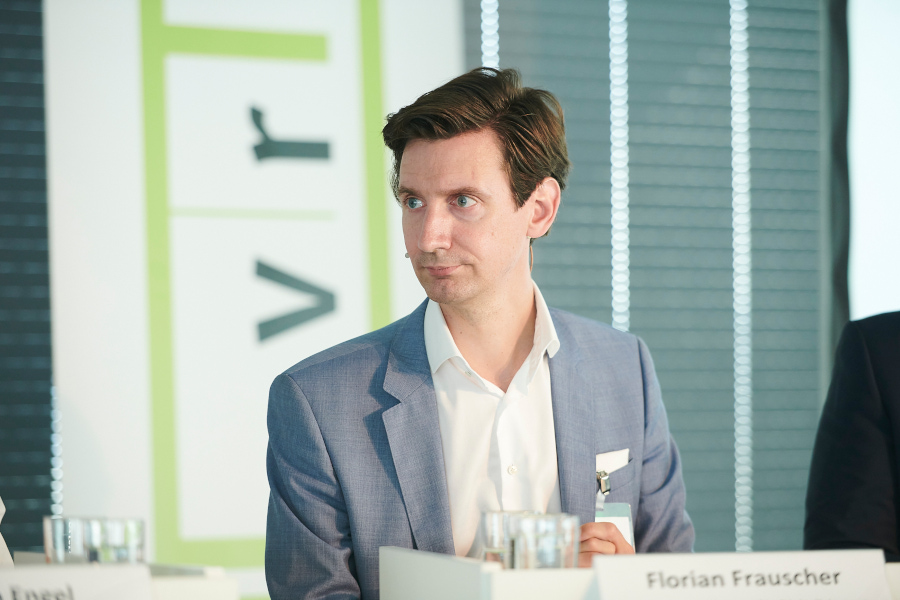
Florian Frauscher, Head of Section for Business Location, Innovation and Internationalization at the Federal Ministry for Digital and Economic Affairs, spoke of the strong research funding system in Austria. The biggest USP, he said, is the research and development environment for Austria as a business location. The BMDW supports science and development with a transformation fund that operates at various levels.
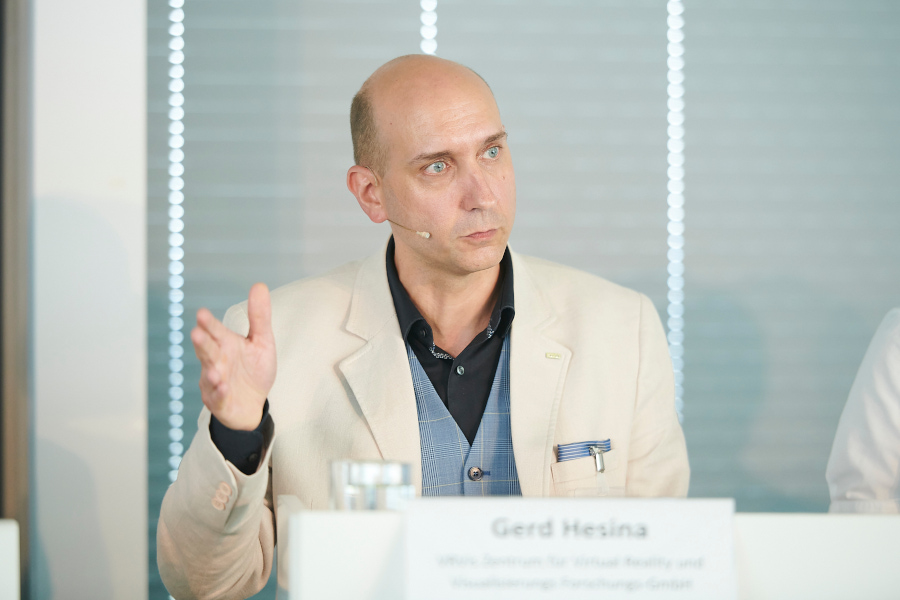
VRVis Managing Director Gerd Hesina emphasized that achieving the global sustainability goals is a major topic of great priority for VRVis as a COMET competence center in the field of visual computing. Topics such as climate change and sustainability are highly complex and can benefit from visual computing as an important translation aid from data to solutions - see the VRVis motto "He/she who sees, understands".
According to Hesina, sustainabilization is about two aspects: Responsibility and Change. Here, he says, one can learn a lot from a COMET center like VRVis: Good relationships between science and industry help get things where they need to go, quickly and efficiently. The central function of VRVis is that of a bridge builder. A research center like VRVis, with over 20 years of experience and success, has global partnerships in both academia and industry, and it is this commonality that is needed to solve global challenges. Of course, startup spirit is important and right, he said, but tangible, realistic goals are now needed. The time for pipe dreams is over. Now, concrete solutions for today's problems must be created quickly, and sooner rather than later. The COMET program is Austria's flagship in the domestic research landscape, for which there is great international recognition. COMET is a best-practice model that brings science and industry together and has the very definite goal of building a high-speed bridge from research to companies and into the common good.
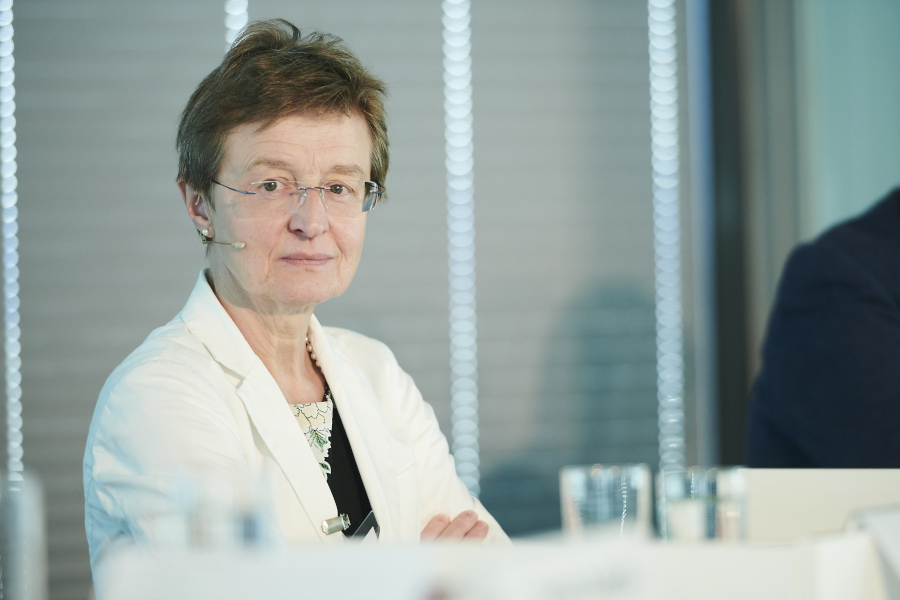
TU Vienna Dean of Computer Science Gerti Kappel addressed a major issue: "We are drowning in data, but lost for information". In our data-driven reality, a lot of data is collected, but it takes know-how and meaningful applications to be able to draw helpful information from this data. As the largest technical educational institution in the country, TU Wien takes its role as an educational institution very seriously; after all, it is educating and training the problem solvers of tomorrow. This is not the only reason why a bachelor's degree program with a focus on sustainability is currently being created at TU Vienna's Computer Science Department, reports Gerti Kappel. Because sustainability and digitization have to go in both directions; we need tech for green as well as green tech.
Visualization is playing an increasingly important role in making complex issues related to climate change understandable, says Gerti Kappel, citing a long-standing collaboration between VRVis and TU Wien as a successful example of how visual computing is being put to concrete use in the service of climate change: The Visdom software is used to simulate and visualize extreme weather events related to heavy rainfall and flooding in order to develop the necessary protective measures for cities and communities and to provide policymakers with the necessary basis for decision-making.
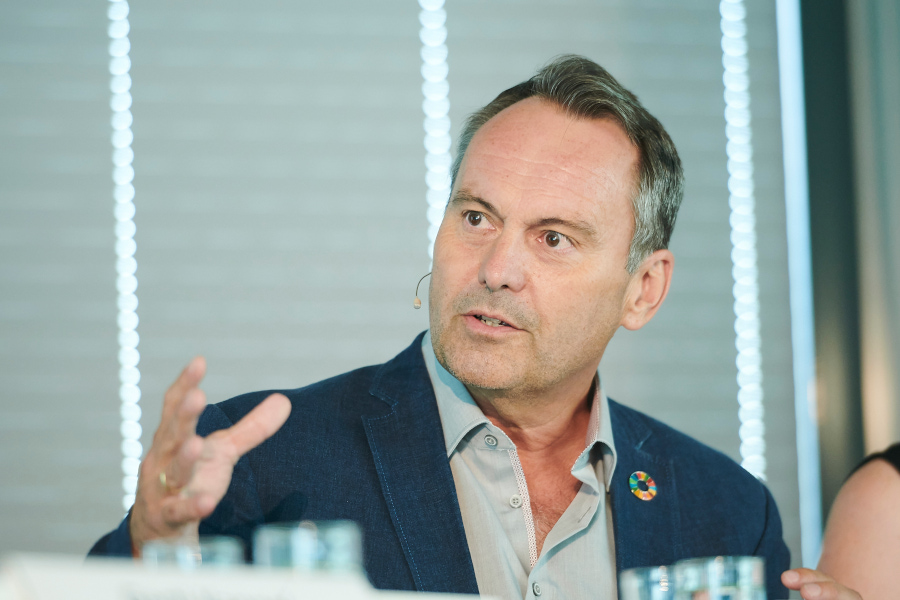
The city of Vienna has set itself an ambitious goal and wants to be climate neutral by 2040. But how exactly is the calculation done, Andreas Januskovecz posed the question. Who has the data sovereignty, if everyone calculates CO² emissions differently? Where exactly is climate neutrality zero?
On the way to a green and climate-neutral future, Andreas Januskovecz sees climate change adaptation measures in urban areas as particularly important. Digitalization, he says, is an important step in modernizing the building sector, for example, and making it sustainable in the first place. The city must rebuild itself to be fit for the climate change (keyword Sponge City). For this, visualization and simulation are particularly important, since communication and making measures understandable contribute to success - you have to meet the citizens at eye level. The social component plays a major role in good implementation of mitigation strategies as well as people's participation. To achieve this, climate policy must be one thing above all: understandable.
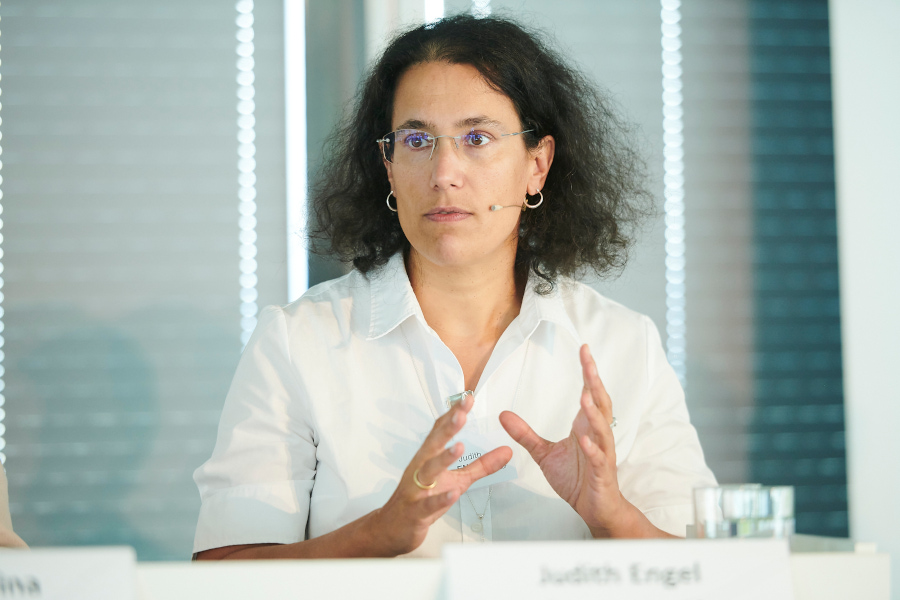
ÖBB board member Judith Engel spoke about digitization as a necessary tool and reported on solutions that the railroad is already using: from virtual reality applications to digital software platforms, ÖBB relies on various digital tools to ensure safety and efficiency. All technological solutions that contribute to more capacity will be used - because this is the future of sustainable rail transport.
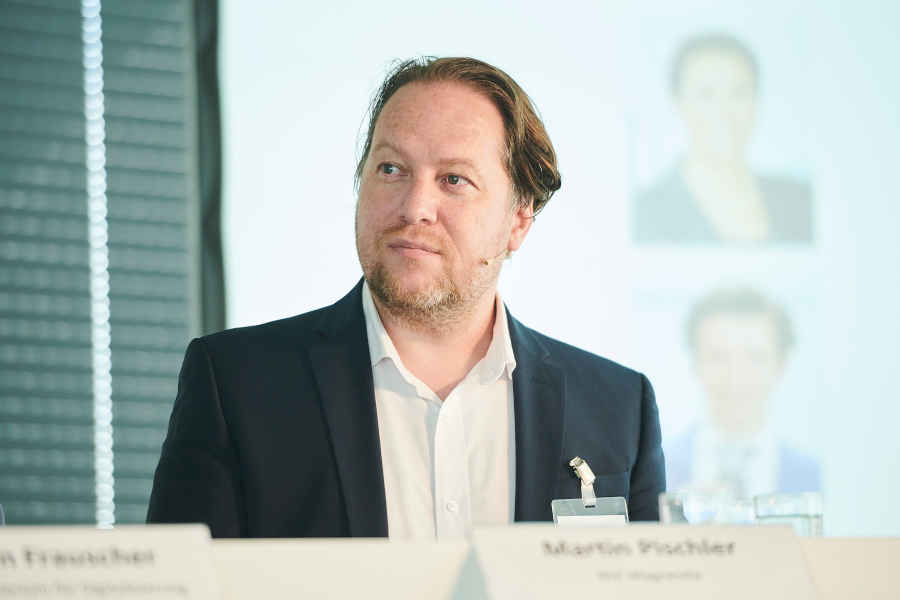
Martin Pischler reported on the versatile production work of RHI Magnesita: more than 2500 refractory products are manufactured for the steel, cement, lime, nonferrous metals, glass, energy, environmental and chemical industries. He spoke about the challenges facing the energy-intensive industry and how highly innovative solutions have already been developed in many aspects to reduce energy consumption and waste. Likewise, RHI Magnesita relies heavily on simulation as well as visual computing to first run through solutions with the help of the computer and only then implement them on the live object. Together with VRVis, a project is realized in which artificial intelligence is used for quality control in order to advance image-based defect detection of refractory materials.
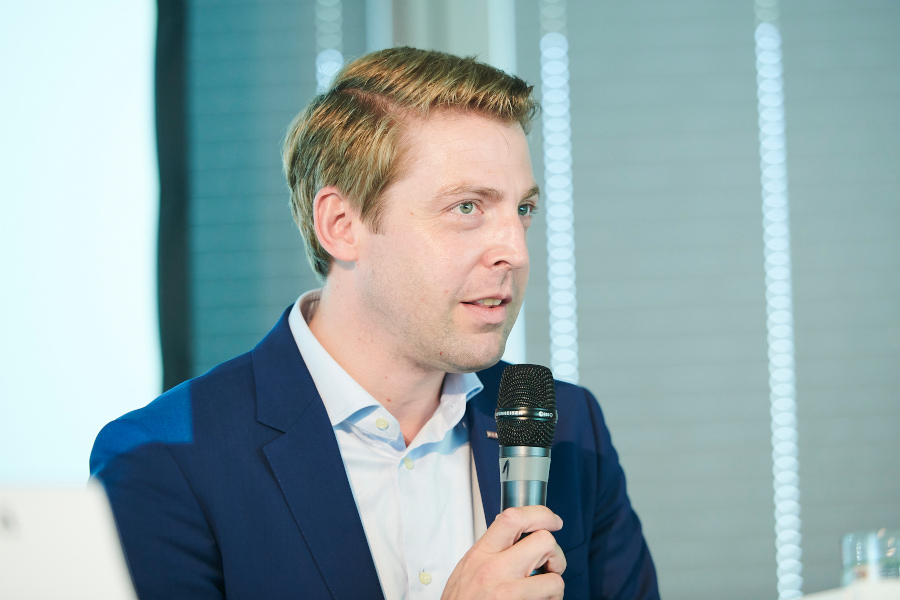
Philipp Gady from the WKO spoke about the different needs in the economy and society, these must be better combined with regard to the goal of more sustainability. It is important to take people along on the journey to a green future.
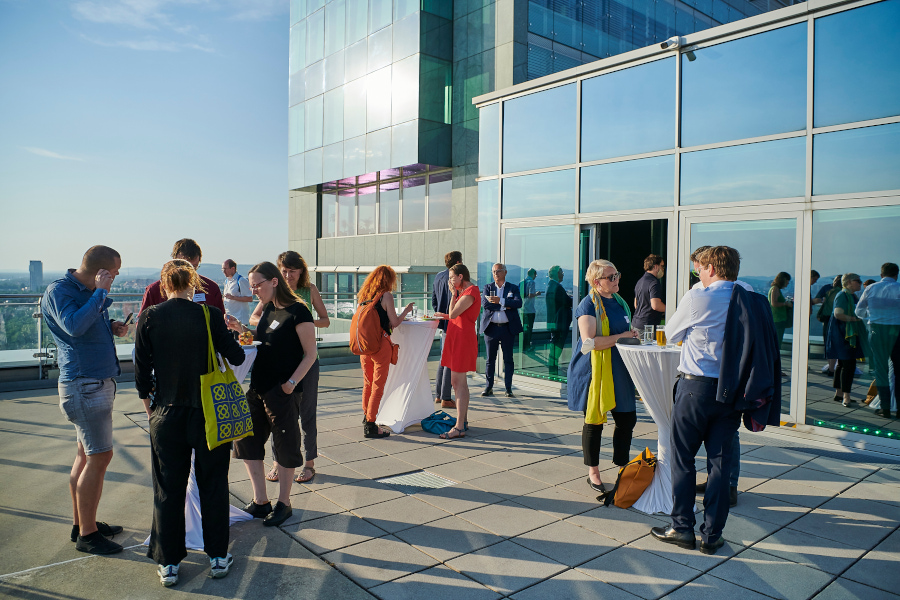
After the discussion, the guests had the opportunity to network and exchange ideas together while enjoying a beautiful view of the city of Vienna.